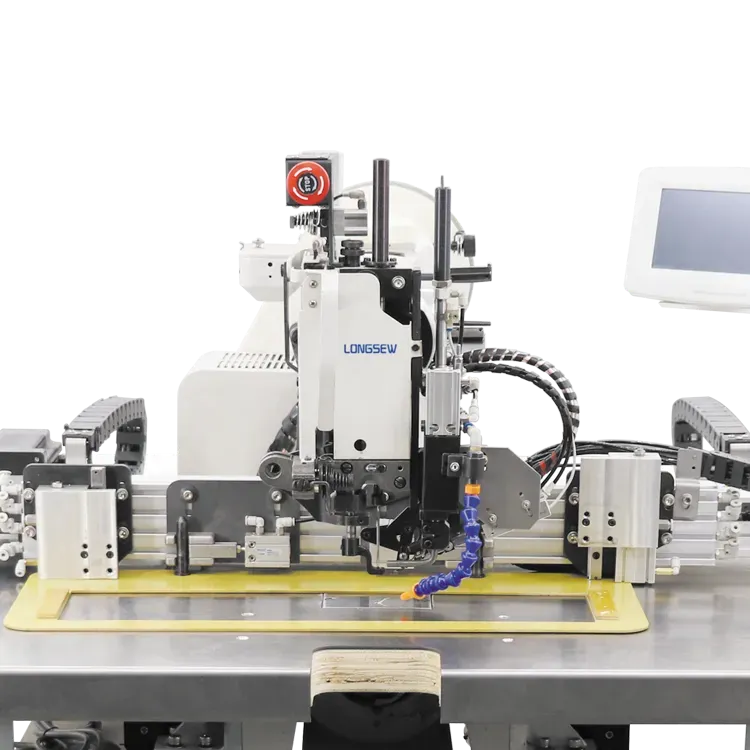What is the difference between heavy duty and non heavy duty sewing machines?
What is the difference between heavy duty and non heavy duty sewing machines?
Sewing machines come in a range of types designed for different applications and abilities. One of the main categories is heavy duty versus standard sewing machines. Heavy duty sewing machines are made for intensive, high-volume, and heavy fabric sewing, while standard machines are more for basic home and garment construction on lighter fabrics. There are some key differences that set heavy duty and standard machines apart.

1. Motor Power
One of the biggest differences is in the motor. Heavy duty machines need to power through thick, layered, or dense fabrics without straining, so they have more powerful motors. Motors in heavy duty machines often range from 1 to 5 amps, while standard motors are usually around 1 amp or less. With the stronger motor, heavy duty machines can sew for longer periods without overheating or losing power. This makes them ideal for sewing operations like upholstery where seams need to go through multiple fabric layers.
2. Speed
Heavy duty machines typically have higher maximum sewing speeds, around 1500 stitches per minute, versus 1000-1200 stitches per minute for standard machines. Again, this allows them to work through heavy fabrics more efficiently. However, heavy duty machines also tend to sew better at slower speeds, in the 500-800 stitch per minute range, for optimal control through thick seams. So they provide a wider speed range to suit the fabric.
Heavy Duty Computerized Auto Pattern Sewing Machine For Slings LS273-3020
3. Needle System
The needles and needle mechanisms are beefed up in heavy-duty sewing machines as well. They use thicker, stronger needles to penetrate heavy fabrics without bending or breaking. The needles are inserted into more heavy duty needle bars and mechanisms to provide stability and vibration resistance at high speeds and with heavyweight needles. This also allows the use of dual needle systems for specialty stitches.
4. Feed System
Heavy duty sewing machines have more powerful feed systems with stronger feed dogs to grip and advance heavy fabrics evenly and precisely. The presser foot pressure is often adjustable to ensure proper feeding without slippage. Some heavy duty machines also have walking feet for perfectly even fabric feeding in difficult materials.
5. Bed Size and Construction
Heavy duty machine beds are larger and made of metal for durability, stability, and vibration reduction. This gives more support for large or bulky fabrics. The flat bed surface keeps the material moving steadily without distortion even at high speeds.
6. Stitch Type and Length
Heavy-duty sewing machines provide extra stitch strength, often with triple feed teeth. The maximum stitch length is longer, up to 8mm versus 5mm, to allow bigger basting-type stitches in heavy fabrics. Extra strong stitches prevent seam rupture in heavyweight materials under stress.
7. Automatic Features
Many heavy duty machines have advanced automatic features not found in standard machines. These include automatic presser foot pressure and lift, automatic needle threaders, shaft driven auto-threaders, and automatic reverse and tie-off stitches. These automate tedious tasks for efficiency and consistency in high-volume sewing.
8. Attachments and Accessories
Heavy duty machines come with more robust standard attachments for tasks like hemming, ruffling, and binding on heavy fabrics. There are often additional attachments available like piping feet and binding folders to expand the abilities on heavy materials. Dual large spool pins allow quick and easy thread spool changes for continuous operation.
9.Durability and Reliability
Overall, heavy duty sewing machines are built for longevity, with all-metal construction and premium internal components. They can sew for years without issues and only need periodic oiling. By contrast, plastic gears and components in standard machines wear out more quickly. Professional heavy usage requires the durable construction of true heavy duty machines.
While standard sewing machines can handle some lighter weight projects like garment construction and craft sewing, their capabilities are limited. Heavy duty machines are the choice of upholsterers, canvas and bag makers, manufacturers, and others sewing dense fabrics all day long. For serious sewing, investing in a quality heavy duty machine is worthwhile for its rugged performance. Knowing the key differences will help tailor your selection to match your sewing needs.
-
Leather Sewing Machine: The Industrial Standard for Tough MaterialsNewsJul.18,2025
-
Sail Making Machine: Heavy-Duty Stitching for Industrial and Marine NeedsNewsJul.18,2025
-
Sling Sewing Machine: The Backbone of Heavy-Duty FabricationNewsJul.18,2025
-
Leather Sewing Machine: Precision for Heavy-Duty StitchingNewsJul.18,2025
-
Big Bag Sewing Machine: Powering the Future of Bulk PackagingNewsJul.18,2025
-
FIBC Sewing Machine: Essential Equipment for Bulk Bag ProductionNewsJul.18,2025
-
Heavy Duty Leather Sewing Machine: A Must-Have for Professional LeatherworkNewsMay.28,2025






























